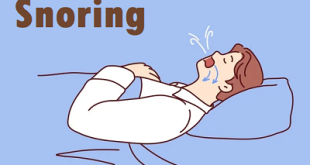Description
Spina bifida is a term which comes from Latin and literally means ‘open’ or ‘split’. It is a birth defect occurs when there is a malformation of bones of the spinal cord during the 1st month of pregnancy. This defect might cause an opening at the back, which is noticeable. As a result, the spinal cord and its outer coverings are protruding from this opening. In some instance, there is no opening and the protruding spinal cord rest under the skin.
Types of spina bifida
There are different types of spina bifida which are as follows.
Spina bifida occulta: It is the very less intense type of spina bifida and also called as ‘hidden’ spina bifida. In this type the opening of the spine is hidden under the skin and so there is no high risk of disability or symptoms.
Closed neural tube defects: It is the second type of spina bifida. In this type of defect, various group of malformation occurs. Abnormal accumulation of fat in the spine region, malformation of vertebral bones and collapse in the meninges are the serious defects usually happens in this form of spina bifida.
Meningocele: This is the third type of spina bifida. The outer coverings of the spine cord obtrude on the vertebral opening which is not covered by the skin layer. People with meningocele may experience few symptoms. Some individuals may also observe symptoms similar to closed neural tube defects.
- Myelomeningocele: It is the most severe form of spina bifida. The membranes and spinal cord protrude into the opening of vertebrae that forms a sac at the back of the baby. This type of defect leads to weakening of the nervous system and also infection may occur due to the contact of sac with the external environment.
History behind spina bifida
- History of spina bifida was found 12000 years back. In between 1618 and 1652 Professor Nicholas Tulp of Amsterdam proposed the term spina bifida.
- In 1761, Giovanni Battista Morgagni an Italian, linked lower-limb deformity and hydrocephalus.
- In 1960s surgeons around the world treated spina bifida by an open surgery to replace and cover the openings of the spina bifida. Installation of shunts are also invented during this era.
Epidemiology
The average incidence of spina bifida around worldwide is one case per 1000 births. Neural tube defects occur at frequencies (per 10,000 births) starting from 0.9 in Canada and 0.7 in central France to 7.7 within the United Arab Emirates and 11.7 in South America.
The highest rates of congenital abnormality are found in components of British Isles, and Wales, wherever 3-4 cases of birth defect per thousand population are reported, at the side of quite half dozen cases of anencephaly (both live births and stillbirths) per a thousand population. The reported overall incidence of birth defect within the British Isles is 2-3.5 cases per a thousand births.
In France, Norway, Hungary, Czechoslovakia, Yugoslavia, and Japan, a low prevalence is reported, being just 0.1-0.6 cases per 1000 live births.
Low socioeconomic status is associated with higher risk of neural tube defects in many populations. Since approximately 1940, epidemics of myelomeningocele have occurred in Boston, Mass;
Causes and Risk factors of spina bifida
- Scarcity of enough folic acid during the gestation period.
- If one of your family members affected with spina bifida.
- Consumption of very low folic acid diets during the pregnancy time.
- Couples with first child having spina bifida have more risk of developing child with neural defects.
- Obesity of a pregnant woman (BMI of 30 or more) may also cause spina bifida.
- Elevated diabetes may also play a role in promoting a fetus with neural defects.
- Consuming certain medications during the gestation period increases the risk of developing newborn with spina bifida and other neural defects. Some of the drugs are Valproate and carbamazepine, which are used to treat bipolar disorder and epilepsy.
- High body temperature during the period of pregnancy, such as prolonged fever and use of hot tub bathing.
- Low economic status: Poor nutritional intake is the key role of such problems.
- Early presence of seizure disorder in the pregnant women.
- Spina bifida can also occur due to the earlier presence of genetic disorders such as Patau’s syndrome, Edwards’ syndrome or Down’s syndrome.
Symptoms and complications of spina bifida
A visual signs of spina bifida occulta can be seen on the skin of newborns spine includes:
- An abnormal tuft of hair
- Augmentation of fat
- A small dimple or birthmark
The symptoms of spina bifida vary according to the location of the gap between the vertebral column.
Movement problems
Since spina bifida affects the nerves of the spine, this result of problems with controlling muscles.
- Muscle weakness
- Paralysis of lower limbs
- Scoliosis
- Bone fractures
- Deformed joints
- Arthritis
- Spinal stenosis
Bladder problems
The nerves that controls the functions of urinary bladder tends to damage due to this spina bifida. Thus it leads to some bladder defects.
- Urinary incontinence
- Urolithiasis
- Hydronephrosis
- Urinary tract infections (UTI)
Bowel problems
- Bowel incontinence
- Constipation
- Diarrhea
Other problems such as
- Hydrocephalus: Excess fluid buildup in the brain which cause brain damage
- Latex allergy
- Learning difficulties
- Reduced sensation in the skin
- Meningitis
- High blood pressure
- Loss of sexual activities
Diagnosis and test to know a newborn with spina bifida
Spina bifida is diagnosed as two periods such as prenatal diagnosis and postnatal diagnosis.
Prenatal diagnosis
There are certain test that can be used before the birth to the child which indicates the presence and absence of neural defects includes:
MSAFP (Maternal serum alpha-fetoprotein) tests: It is the test to measure the levels of alpha-fetoprotein (AFP). This the particular protein produced by the growing fetus. If there is abnormal production of such proteins during pregnancy reveals the presence of spina bifida. This test is done between15 to 20 weeks of pregnancy.
Along with MSAFP test there are other blood tests also be useful. They are used to find out the following substances placenta.
- Human chorionic gonadotropin (HCG)
- Estriol
- Inhibin A
Ultrasound: If the blood tests results in high levels of AFP, ultrasound examination is performed to find out the root cause. Advanced form of ultrasound can be used to visualize and establish the spina bifida. Ultrasound is an effective tool can be used for prenatal diagnosis because it is safe for both fetus and mother.
- Amniocentesis: This tests is suggested if the levels of AFP are high and Ultrasound is normal. A needle is used to aspirate the sample of fluid from amniotic sac for analysis of AFP. If there is a high levels of AFP leads to an open neural defects because of the release of this protein from spine into the amniotic sac. It can be tested during 15 to 20 weeks of pregnancy.
Postnatal diagnosis
In some cases doctors may diagnose spina bifida after the birth of the child. If the doctors suspect that the newborn has spina bifida they may insist to do the following imaging techniques.
- X-Ray: It is used to detect the malformation in the bones such as scoliosis, bone fractures and joint damage in the newborn child.
- Computed tomography (CT scan or CAT scan): This is used to find the changes in the spine or vertebrae of the child.
- Magnetic resonance imaging (MRI): Doctors prescribe this for your newborn if he suspects hydrocephalus in the brain.
Treatment and Rehabilitation
Surgery: Surgery is done within 24 to 28 hours after the birth of child. During the surgery the surgeon replaces the exposed tissues and nerves back into the baby’s spinal cord. The gap in the spinal cord is then covered by a muscle or tissue.
In case of hydrocephalus a shunt is placed in the brain towards the spinal cord to urinary bladder. This shunt helps to drain the excess fluid from the brain into urinary bladder.
Prenatal surgery: This surgery is done before the 26th week of gestation. In prenatal surgery, surgeon expose the mother’s womb to correct the spina bifida defects
Physiotherapy: This can be an important a part of the child’s treatment, which is able to facilitate him/her become as freelance as feasible, additionally as preventing the lower limb muscles from weakening. Special leg braces could facilitate to keep the muscles sturdy.
C-section birth: Suppose the doctors noticed that baby has spina bifida, it is good to be born by caesarean due to which the exposed nerves and spine can be prevented from damaging through natural delivery.
Occupational therapy: This therapy assist the children to perform day to day activities more actively like bathing, eating and playing by themselves. This improves the children’s self-confidence and self-determination.
Assistive technologies: People with complete paralysis might need wheelchairs as a locomotory assistive device. Though electric wheelchairs are additional convenient, manual ones will maintain the firmness and stability of upper body. Leg braces are useful in patient with partial paralysis. There are lots of computer software’s which can be very much helpful in learning activities of the children’s with neural defects. There are various assistive technologies that can be useful for the following health issues:
Urinary incontinence (UI)
- Kids with UI might trained to utilize CIC (clean irregular catheterization), a procedure to deflate the bladder routinely for which the guardian inserts a catheter through the urethra and into the bladder to devoid it.
- Anti-muscarinics are prescribed to adults. It is a medication which allows the bladder to withhold a large amount of urine by which it reduces the number of times to pee.
- In some cases of child the bladder contracts abnormally (Hyper reflexic bladder), in such situation practioner may suggest botulinum toxin injection to paralyze the muscles of bladder.
- Artificial urinary sphincter (AUS) – It is surgically implanted silicone cuff which is a pump and ballon attached to urethra and the ballon is fixed in the abdomen.
Bowel incontinence
For this problem proper diet with enough fiber content is necessary to abstain the constipation. It is also to ensure that patient should not end up with diarrhea. A diet chart will help these types of problems to know which type of food is recommended for the patient.
Prevention of Spina bifida
- It is recommended that the women who are under childbearing age and pregnant should take 0.4 mg of folic acid daily.
- Natural foods which are rich in folic acid include spinach, egg yolks, citrus fruits and broccoli. Enriched foods with folic acid for breakfast are cereals, enriched bread, flours, pastas, rice and other grain products.
- All pregnant and child bearing age women should make ensure that the package labels are getting the right proportion of nutrients with folic acid. Notice that folic acid may be named as folate, which is the original form of folic acid found in the cereals
- High doses of folic acid should be consumed by the women who are with spina bifida child earlier to get pregnant later.
- Women who are taking anti-seizure and diabetes medications should also need higher than 400mg per day. The recommended daily allowance of folic acid for those women is 4000mcg, which can be started before one to three months of conception and should continue until the third trimester.
 Diseases Treatments Dictionary This is complete solution to read all diseases treatments Which covers Prevention, Causes, Symptoms, Medical Terms, Drugs, Prescription, Natural Remedies with cures and Treatments. Most of the common diseases were listed in names, split with categories.
Diseases Treatments Dictionary This is complete solution to read all diseases treatments Which covers Prevention, Causes, Symptoms, Medical Terms, Drugs, Prescription, Natural Remedies with cures and Treatments. Most of the common diseases were listed in names, split with categories.








thanks for your time and support of sending to us medical scripts free of charge, long live…… and keep it up
m actually lookin for help….m having a tingling pain in my right leg from the knee up to the hip ……what could it be n hw do l take care of it?
Please consult any specialist to avoid serious effects in future.
I have a son with spinal bifida, though it has been operated. but he can not walk nor stand on his feet, please what do I do?
Consult a nephrology specialist. The spina bifida which occur in the lumbar region may affect the region below the waist. Rehabilitation can be given by some locomotory assistive devices
would you please improve the images by uploading some X rays of this condition
Okay. Will update soon.